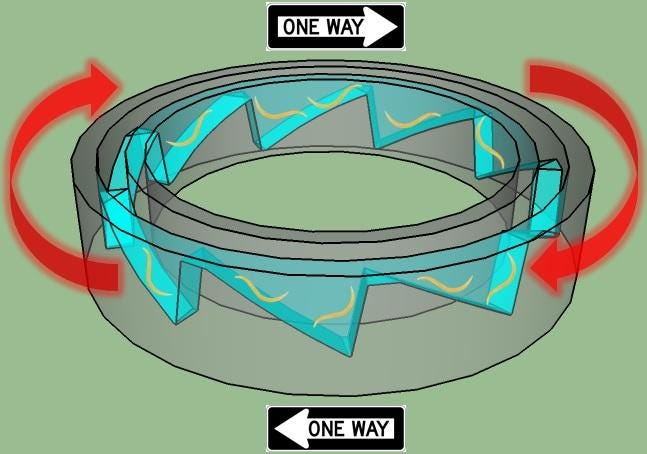Penn Researchers Shed Light on the Roundworm’s Curious Swimming Behavior

The round worm Caenorhabditis elegans, a nematode, is a puzzling creature.
A previous study at the University of Pennsylvania established that, in some cases, these nematodes are actually counter-current and swim upstream rather than with the flow of liquid as a result of hydrodynamic forces. Another study indicated that they tend to accumulate next to surfaces.
Now, a new study published in the Journal of the Royal Society Interface finds that, rather than settling to the bottom of a pool of water as one would expect for an animal heavier than water, the nematodes seem to “swim happily” through the liquid.
Using two microscopes, one that observed from above and the other from the side, the researchers found that, despite their slow pace and inability to develop lift, the nematodes manage to remain essentially suspended above the bottom of the vessel through constant collisions with it. By continuously bouncing against the bottom, they can maintain their swimming gait.
Nematodes are broadly used in medical science to study the relationship between genotype and phenotype, to study simple neural circuits of behavior and to study the aging process, among other uses. The results of this current study could give researchers a means to sort nematodes based on their ability to swim, which depends on their genes, nerve cells, age, reaction to drugs, environmental conditions and many other factors.
Being able to sort these animals by certain traits allows researchers to screen hundreds or thousands of them for a specific behavior or trait in order to determine which genes are responsible for it.

The research was led by Haim Bau, professor in the Department of Mechanical Engineering & Applied Mechanics in the School of Engineering and Applied Science; alumnus Jinzhou Yuan; and graduate student Hungtang Ko. David Raizen, associate professor in the Department of Neurology in Penn’s Perelman School of Medicine, also contributed to the study.
The findings led to the idea that, since the nematodes interact closely with the bottom of the vessel and if the vessel has some kind of a topology or pattern, the animal will have to follow that pattern.
“This is somewhat unusual for swimmers,” Bau said. “You can imagine if you’re swimming in the ocean and there is a trench, you won’t dip into the trench and come out; you’ll simply glide over it. But the same is not true for C. elegans. They will actually go to the bottom of the trench and try to climb upwards.”
Read more at Penn News.
